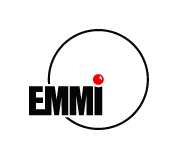The aim of the workshop is to compare the different relativistic many-body techniques, get a diagnostic of the difficulties of each method and how to progress in the direction of high-complexity systems which generate very large numbers of configurations and angular integrals, and require state of the art computing technique and supercomputers. Use of artificial intelligence and machine learning will also be in the agenda. We want to study in more details the newest developments in nuclear structure of super-heavy elements and their impact on the atomic structure of superheavy elements. The different groups will present the methods they have been developing, their efficiency on obtaining new more accurate theoretical results. The latest developments in the prediction of the position of the superheavy elements in the periodic table will be reviewed. The progress in understanding of the region near and above super-critical fields will be examined, in the framework of future FAIR experiments.
Topics
It is well known that even relatively light atoms like Ni have a complicated structure that we still cannot calculate accurately. If we go to heavy or super-heavy elements, with several open shells with high-l values, it is going to be even more difficult. It is thus clear that the accuracy of predictions of the atomic properties of super-heavy elements is not granted. In the superheavy element region, the spectrum becomes dense and it is a hard task to even predict the correct electronic ground state.
Another issue, which is not settled still is what happens when the 1s shell energy reaches -mc^2. Is this really the end of the periodic table? What happens in collisions of nuclei with Z1+Z2>Z_critical?
Many questions are open, from very fundamental ones in QED, in many-body techniques, to very practical ones, like efficient handling on huge number of configurations, handling of huge numbers of angular coefficients, how to deal with retardation and magnetic effects…
A non-limitative list of topics that could be interesting for discussions in the workshop:
1. Current status of the extension of the periodic table to super-heavy elements
2. Accuracy of calculations in systems with open external shells
3. New developments in relativistic many-body methods
4. Extending QED calculations to superheavy elements
5. Supercritical fields in ion-ion collisions (QED effects…)
6. New relativistic codes developments
7. New mathematical methods
8. Super-computing aspects
9. Use of Artificial Intelligence, deep learning methods to improve results and methods
10. Quantum computing
11. Collective effects in superheavy elements
12. Evolution of atomic shells structure
13. Influence of nuclear shape on superheavy elements transition energies

